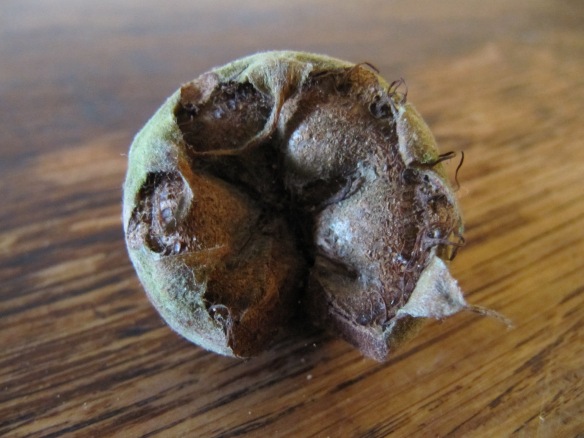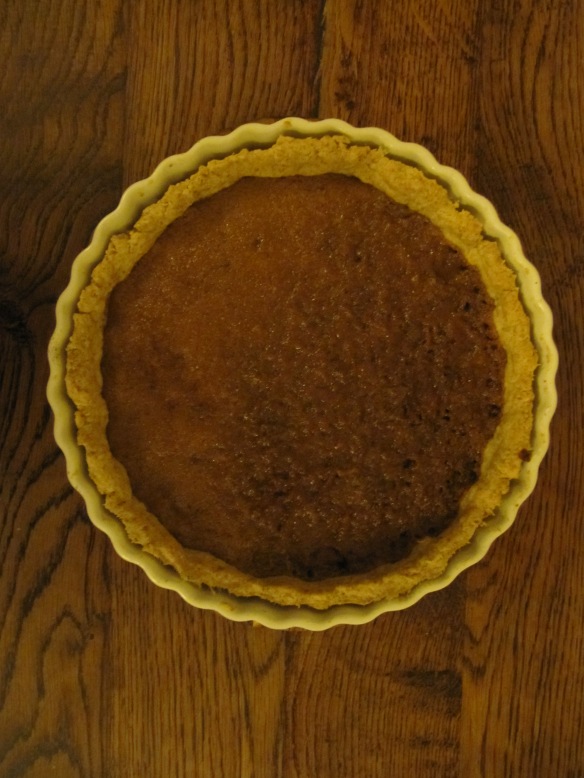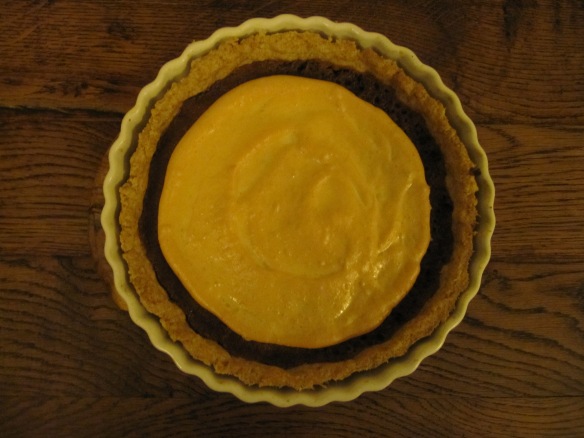This is a sad story. It was forged in ardent romantic illusion and quenched – this very evening – in the cold mud of disappointment. There will be a flutter of redemption and solace at the end, but not enough to match the initial high hopes. I was in love with something I had never seen or touched. I had heard great things, of its soft scent, its delicious flavour, its near magical powers to transform from something hard, cold and green to tender, giving, open flesh almost in the blink of an eye. The object of my imaginary desires was the medlar.
Let’s start with a pretty picture of medlar blossom to represent the dream.
My appetite was whetted by occasional references on Gardeners’ Question Time and a short account of the fruit in Andrew Dalby’s excellent The Shakespeare Cookbook. The attractive and intriguing traits of the medlar are these. It does not ripen like ordinary fruit – or at least it does, but it’s not ready to eat until it’s rotted, or more properly ‘bletted’. It is like an apple in miniature, arranged around five pips, but while these are larger than apple pips, the fruit is smaller. But best of all, it sounds like a fruit with a sense of fun and humour, for it was known, in the sixteenth century as an ‘open-arse’. If you look at it from a certain angle you can see what those jolly Elizabethans meant.
My interest in the medlar was not easy to satisfy. It’s not for sale in shops. But then, at the beginning of this month, it was for sale at the farmers’ market, so I bought a punnet and took it home. I laid the little greeny-brown fruits out on the dining table and waited for them to blet. And waited. And waited. Not only did they take ages to blet, they did it one at a time. About one a day. It has taken almost three weeks for the whole lot to reach the edible stage. What happens is the firm apple-like greeny-white flesh turns a soft dark brown.
This was my first indication that the medlar might be hard to love but there were two redeeming features. The bletted fruit had delicately spotted skin and smelt exactly like an orchard on a damp morning, a smell I happen to like.
This evening I set to making a bastardised version of the medlar tart in The Shakespeare Cookbook. And this led to by second disappointment. The medlar did not give its flesh up easily. Maybe my medlars were smaller or more bletted than the ones Andrew Dalby had in mind. His suggested method was to “cut the medlars in half and scoop out the soft flesh with a teaspoon”. I ended up with a tiresome mixture of pulp, pips and skin on my hand and not much in the bowl. For me, grumpy squeezing and picking out the pips worked best in the end.
Will there be a third disappointment? Will the medlar be as fragrant and delightful to eat as they all promised… Find out in a few short lines after the recipe:
Pastry
225g plain flour
grated zest of ½ lemon
tiny pinch of salt
110g unsalted butter
½ tbsp caster sugar
2-3 tbsp cold water
Filling
at least a dozen bletted medlars*
2 tbsp soft brown sugar
2cm3 fresh ginger
150ml whipping cream1 egg, separated
1 tsp cinnamon
* If you don’t have medlars, and you probably don’t, you could try replacing them with a large peeled and grated Bramley apple.
Preheat the oven to 180°C (reduce for a fan oven). Butter a tart or flan case.
In a mixing bowl stir together the flour, salt and lemon zest. Lightly rub in the butter. When you reach the rough breadcrumb stage stir in the sugar. Add the water one tablespoon at a time and stir with a fork until the crumbs start to bind. Give them a quick squeeze to bring it all together as pastry. Press this into the tart case, prick the base all over with a fork, and bake for twenty minutes.
When it’s done remove it from the oven and turn the heat down 20°.
Meanwhile, get the pulp out of those medlars any way you can. Put it in a saucepan with the brown sugar and grate in the ginger. Heat gently and stir till this mixture is smooth. Add the cream and heat again until it’s hot but not boiling. Beat the egg yolk and stir it in. Keep heating and stirring until the mixture thickens.
Pour this custardy mix into the cooked flan case. Bake for another fifteen minutes.
I felt uncomfortable with the nakedness of my tart so I whipped up the egg white with a spoonful of caster sugar to make a soft topping. Spread this on and bake for another ten to fifteen minutes.
Tasting notes: Actually not bad. I’d cook it again if somebody brought the medlars round to my house ready-bletted and got the pulp out for me.





